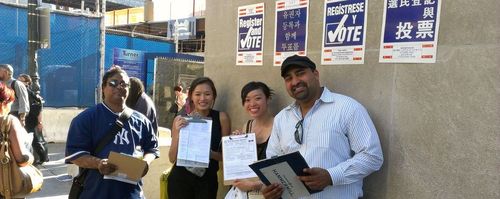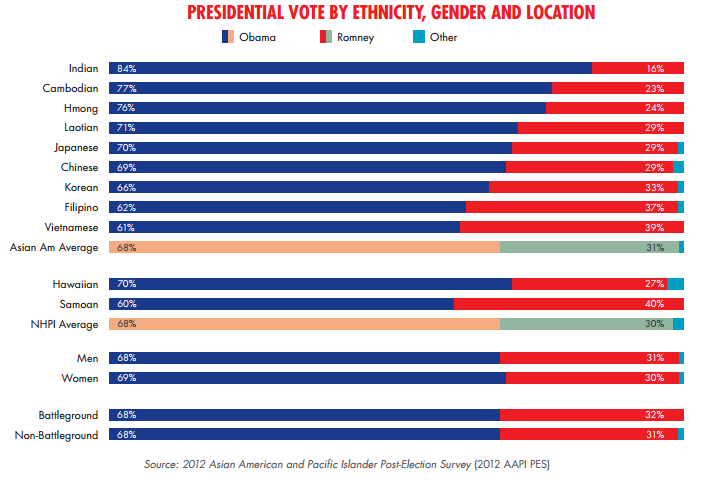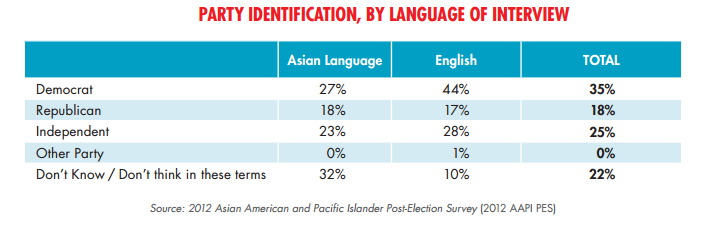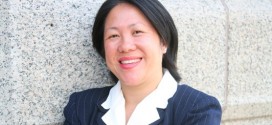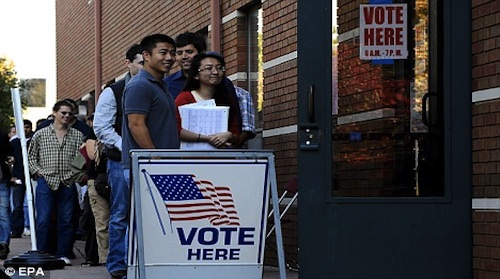
Next year, the country will elect a new president. But next year is already here. Notice how candidates are already positioning themselves for the primaries and caucuses? It is urgent that now–not next year–is when all candidates must realize that American voters of Asian and Pacific heritage will play a major role in the 2016 elections.
Republican Jeb Bush was first at the gate, albeit unofficially, in next year’s presidential elections. Bush is of course, former Florida governor and son and brother of two former presidents. In a crowded Republican field, Senator Ted Cruz was the first to officially launch his candidacy in March.
In the Democratic Party, Hillary Clinton is expected to formally announce her candidacy this month. The likely theme: The country already elected its first-ever black president–why not the first woman president? Supporters tout her experience as an elected and appointive official. Hillary is a former senator and former secretary of state. She is also a former First Lady.
The Mainstream Media report that the Democratic Party does not seem inclined to have a Plan B Candidate. Yet the party’s progressive wing is trying to urge Senator Elizabeth Warren to throw her hat in the ring. At this point, Warren has demurred from taking up the challenge. The media, such as it is, view a Hillary coronation as boring. They relish a messy fight in the primaries for both parties.
2 Swing States
One thing, however, is clear. American voters of Asian and Pacific Islander heritage must let both political parties recognize their rising Voter Power. They must use this advantage in insuring that every candidate understands their issues and concerns have grown more urgent with each passing year.
For statistical purposes, the Census defines an Asian as someone “having origins in any of the original peoples of the Far East, Southeast Asia, or the Indian subcontinent.” In the 2010 Census, this nation’s fastest-growing minority population grew from Year 2000 by 43 per cent (or nearly doubled) to 14.7 million, due to migration and birth. Today, Americans of Asian origin are estimated to be over 18 million. This figure is 6 per cent of the country’s total population of more than 300 million.
Behind the Numbers: Post-Election Survey of Asian American and Pacific Islander Voters in 2012 reported: “Although states with historically high concentrations of Asian Americans, such as California and New York, continue to see their communities grow, Asian Americans are fanning out and becoming increasing shares of the populations of other states, such as Nevada, Arizona, North Carolina, and Georgia. In these four states, Asian American communities grew the fastest in the nation over the last decade. Florida and Virginia—which were presidential battlegrounds—also saw their Asian American populations grow faster than the national average.” These two have gained importance as swing states. That is, in 2016 they will be crucial in deciding the nation’s next president.
In the 2012 presidential elections, 72 per cent of this ever-growing population voted for Democratic Party’s President Obama. This translates to some 2.5 million out of a total of 3.6 million Asian American voters, according to an estimate of “Behind the Numbers.” The survey was a collaborative effort of Asian American Justice Center (AAJC), Asian and Pacific Islander American Vote, and National Asian American Survey.
This survey reported on the likely impact of the Asian American vote in 2012: “Given the relatively small sample sizes for individual states such as Florida, Virginia, and Nevada, estimating Asian Americans’ impact on the Electoral College using our survey data was considerably more difficult. Still, using Asian Americans’ vote share from the 2008 election as a conservative floor, we can say that the Asian American share of the 2012 presidential vote was likely greater than the margin of victory in Florida and Virginia, and about half the margin of victory in Nevada and Ohio.”
A 2014 APIAVote and Asian Americans Advancing Justice/AAJC Voter Survey traced the growth of Asian American vote not just to community organizations getting more involved, but also to the rising number of AAPI elected officials and candidates running for office. The 2014 University of California (UCLA) Asian Pacific American Political Almanac reports “there are at least 4,000 Asian American and Pacific Islander elected officials and appointees from 39 states.”
Interestingly, the 2012 survey found there was no significant gender gap: “Asian American women went 69 percent for Obama, Asian American men, 68 percent.” This meant, for instance, that two votes for the same presidential candidate were cast in a couple’s household–instead of the wife’s vote canceling out the husband’s vote if there had been a gender gap.
But the 2014 survey noted “there is a stronger identification as Democrat among women in 2014 than in 2012.” Maybe men and women, husbands and wives and also other couples vote differently in presidential elections, who knows? It will be noted that 2012 was a presidential election year, and 2014 was the midterm polls for congressional and senatorial candidates, state and local officials.
Opportunities
For the 2016 presidential elections, there are major opportunities that can further increase the number of Asian American voters, based on identical findings from election surveys conducted in 2012 and 2014.
According to the 2012 Behind the Numbers survey, Asian American vote “is on the rise.” But much depends on engaging communities “and unleashing the untapped potential of Asian American and Pacific Islander voters.”
The survey noted that 44 per cent, or about one in two potential Asian American voters, has “difficulty speaking English.” The report continues: “Excluding Indians, Filipinos, and Japanese, a majority of adult Asian American citizens has trouble with English. Even within ethnic groups with higher rates of English proficiency, a significant proportion of adult citizens have difficulty (e.g. 30 percent for Filipinos and 36 percent for Japanese)…Language difficulties can be a barrier to voting.”
The survey stressed that approximately 60 percent of the Asian American and Pacific Islander population was born outside the United States. Of this figure, “nearly three out of four Asian Americans speak a language other than English at home.”
The 2012 survey pointed out that “results indicate that party outreach (which, so far, has been relatively lacking among these communities), could shape future vote choices of Asian Americans and Pacific Islanders, particularly in language outreach.” (The 2012 survey itself was “conducted in nine Asian languages” and also in English and Spanish. The 2014 survey used English, Cantonese, Mandarin, Korean, and Vietnamese in its polling interviews.)
GOP, or Democrat?
Both the 2012 and 2014 surveys also underscored a crucial finding. The 2014 survey noted: “Asian American voters are ‘up for grabs’ in terms of party identification. The largest group is ‘independent’ or ‘don’t know,’ while among partisans, Democrats have 2-to-1 advantage.”
The 2012 survey had the same conclusion: “Our findings emphasize that the Asian American and Pacific Islander voting blocs are truly up for grabs. Although overall political engagement increased, Asian Americans and Pacific Islanders do not strongly identify with any party. They vote for candidates who support and promote progress on issues that matter to their families and communities.”
The 2012 survey noted that “…examination of party identification among Asian Americans and Pacific Islanders reveals that a sizable proportion does not identify with either party…only 53 percent of Asian Americans identified with either major party (with similar findings for Pacific Islanders).”
This leaves nearly half of American voters of Asian ancestry that are “open to persuasion and outreach in future elections” from both political parties. The 2014 survey found that “Asian American registered voters who are naturalized citizens are less likely than U.S.-born Asian Americans to identify with either party.”
The 2014 survey also noted: “Japanese Americans and Indian Americans are the most strongly identified with the Democratic Party, followed by Korean Americans and Filipino Americans. Chinese Americans and Vietnamese Americans are least likely to identify with either party, but they have one key difference: among those who identify, Chinese Americans are about twice as likely to favor the Democratic Party over the Republican Party, while for Vietnamese Americans, the split between Democratic and Republican party identification is about even.”
The 2014 survey showed that “Asian Americans tend to favor the Democratic Party on many key issues: The Democratic advantage is strongest on health care, income inequality and moderate on gun control, immigration, and smallest on taxes. The Republican Party is seen as stronger on national security.”
But last year, the Republican Party mounted all-out grassroots voter identification and registration outreach, funded targeted contests and intensified turn-out efforts on Election Day. Result: For the first time, the Asian American vote favored the Republican Party. Politico’s top expert Alex Burns tweeted on election night: “Wow-GOP wins Asian Voters by 1 point Nationwide, 50-49.”
The Hill reported the Republicans credited their 2014 electoral triumph to their “increased investment in voter data and technology.” The 50-49 Asian American vote, as well as Republican’s overall historic wave, was also due to a growth spurt in Asian American volunteers and to dedicated top staff, including Republican National Committee (RNC) spokesman Jason Chung and RNC Asian Pacific American Press Secretary Ninio Fetalvo.
Fetalvo remarked that in 2016, “Asian Pacific Americans will vote for a Republican candidate that increases economic and educational opportunities for themselves and their families.”
International Leadership Foundation Founder & CEO Chiling Tong pointed out: “Asian Pacific Americans (APAs) focus on both the present and future, and want presidential candidates to prove that they have the ability to improve the APA community and Mainstream American society in general.”
For the 2016 presidential elections, which party will win the Asian Pacific American vote? The time for candidates, parties and organizations to get ready for voter education and outreach is this year. American voters of Asian and Pacific heritage should realize their strength. Indeed, they have the opportunity to be a major player in electing the nation’s next president.
 Asian Fortune Your source for all things Asian American
Asian Fortune Your source for all things Asian American
